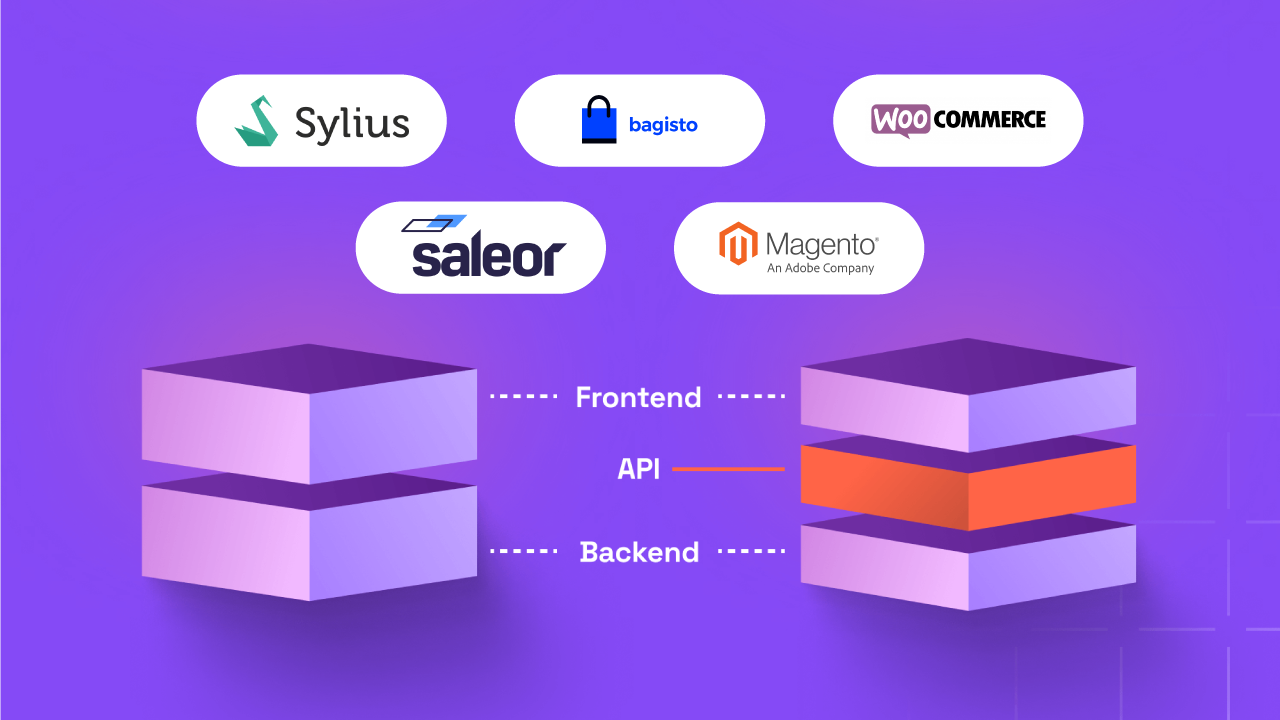A – Z of eCommerce SEO to Easily Rank and Increase Sales in 3 Months

In contrast to general SEO, which might focus on a wide range of content types, eCommerce SEO specifically concentrates on optimizing category and product pages. This practice is crucial for driving organic traffic to the website, which can lead to increased sales and brand visibility.
Why is SEO Crucial for eCommerce Success?
SEO is a crucial element for the success of eCommerce websites. Its benefits extend beyond merely achieving higher rankings in search engine results.
Primarily, it enhances trust and credibility; websites that rank higher are often perceived as more trustworthy by users.
By driving organic traffic to a website, you can reduce your advertising expenses and achieve profitability.
Furthermore, effective SEO is instrumental in driving increased traffic to a site, which can lead to higher conversion rates, boosted sales, and, ultimately, the overall success of the business.
In the latest episode of Shift-Click, we welcomed Louis Smith, a prominent eCommerce SEO expert. Throughout the episode, Louis addressed numerous questions from the audience, providing his expert insights on a range of topics related to eCommerce SEO. This podcast is essential listening for anyone aiming to improve their eCommerce platform’s performance and achieve organic revenue growth using effective and ethical SEO strategies.
Listen to the podcast:
Step-by-Step Approach to eCommerce SEO
Building a successful eCommerce website is like constructing a building; both require meticulous planning and significant investments of time, money, and effort. Just as a building isn’t built overnight, optimizing a website is not an instantaneous task.
The journey towards effective eCommerce SEO starts with a strategic approach. It’s only after careful planning and taking the initial steps that the real work can commence.
Here’s a step-by-step guide to ensure your eCommerce SEO strategy yields long-term results:
Doing Keyword Research the Right Way in eCommerce SEO
Keyword research is indeed a foundational step for effective Search Engine Optimization.
A keyword is any word or phrase that users enter into a search engine. These can range from single words to complex phrases and are used to find information, products, or services online.
Keywords are very important in SEO as they define a website’s content topic. By targeting the right keywords, you can enhance your eCommerce site’s visibility on search engines, thereby attracting more relevant traffic.
“Even if you have many backlinks, if your content doesn’t meet the user’s needs or intentions, your site won’t perform well in search results.” Louis Smith, eCommerce SEO specialist
Steps For Effective Keyword Research:
Now, there are some things to keep in mind while starting keyword research:
Understand Searcher Intent:
- Recognize the reasons behind a user’s search for a particular keyword and ensure your content aligns with that intent.
- Catering to keywords with buying intent is essential for your e-commerce sites.
- For informational keywords, it’s effective to direct them to your blog. This approach allows you to funnel traffic from the blog to your e-commerce website, leveraging the informational content to guide potential customers towards making a purchase.
“Google excels at discerning the intent behind search queries. If your content doesn’t satisfy the user’s purpose or answer their question, it won’t appear as a top search result.” Louis Smith
Identify Your Niche:
- It’s essential to focus on keywords related to your business or website. Be as specific as you can with your keywords. For example, if you are a clothing company, identify what kind of clothing do you sell. Is it fast fashion, work wear, kids clothing, etc. Identifying your niche gives the best results.
Use Keyword Research Tools:
- Tools such as Ubersuggest, Ahrefs, and Google Keyword Planner simplify keyword research. They offer insights into search volume, keyword difficulty, and suggest related keywords making the task easier.
Analyze the Competition:
- Look at what keywords your competitors are targeting and how they rank for them.
Prioritize Keywords:
- Based on your research, select keywords that have a reasonable balance of search volume and competition and are relevant to your content.
Key Tip: Employ Long-tail Keywords. These are extended, more specific phrases with typically lower competition than generic, short-tail keywords. They’re easier to rank for and attract more qualified traffic.
Keyword research isn’t a one-time task. Search trends and competition change over time, so it’s vital to continually update and refine your keyword strategy.
Read More: eCommerce Trends and Challenges
“In SEO, it’s essential to cross-match intent with entities, going beyond mere keywords. Understanding the real-world relationships of entities and the intent behind searches is key to an effective SEO strategy.” Louis Smith
Site Structure and Organization for eCommerce SEO
Main Categories & Subcategories: Organize your products into intuitive main categories and subcategories. This helps users find what they’re looking for more easily.
For example, take a look at this image showcasing Myntra’s website. This type of systematic organization of product categories ensures that users can navigate directly to the products they are interested in, without having to sift through unrelated items.

Intuitive Layout: The website layout should be intuitive, with a clear menu structure and an easily accessible search function.
User-Friendly Design: Ensure that product pages are easy to navigate, with clear options for adding items to the cart and proceeding to checkout.
Interactive Elements: Incorporate interactive elements such as hover effects on products or clickable breadcrumbs for easy navigation.
Visual Elements: Utilize visual elements like banners, sliders, and graphics to make the site more engaging without overwhelming the user.
Structure Content with Headers: Use headers (H1, H2, H3, etc.) to structure your content clearly. They improve user experience by making it easier to read and skim content.
“For small to medium brands, catering to the customer experience is essential. The better you understand the customer journey, the more effective your enterprise e-commerce website can be.” Louis Smith
URL Optimization for eCommerce SEO
Optimizing URLs is an essential yet often overlooked aspect of eCommerce SEO. The primary goal here is to keep URLs simple and clear as it benefits search engine indexing.
For example:
- Preferred URL: mywebsite.com/women-dresses
- Less Effective URL: mywebsite.com/latest-fashion-women-dresses-on-sale
The first URL is concise and directly to the point, making it more search-engine friendly. In contrast, the second URL is lengthy and cluttered with unnecessary words making it less straightforward for search engines to interpret the main focus of the page.
Additionally, incorporating chosen keywords into your URL can further optimize your site for search engines. Remember, simplicity and relevance are key in URL optimization.
Optimizing Titles and Meta Descriptions for Higher CTR
SEO Friendly Titles
The title is the first thing a searcher sees, so make it count. Write titles that immediately grab attention:
- Make sure that the title accurately reflects the content of the page.
- Place primary keywords towards the beginning of the title for better search engine visibility.
- Keep the title brief and to the point, ideally around 60 characters to avoid being cut off in search results, while still being descriptive.
- Titles with numbers or questions can be more engaging and attract more clicks.
Examples of Engaging Titles:
- “Buy the Best Baby Strollers Online at Discounted Prices – Your Affordable Quality Choice”
- This title effectively targets price-conscious parents looking for quality baby strollers. It combines the appeal of affordability (“Discounted Prices”) with the assurance of quality (“Best Baby Strollers”), catering to online shoppers seeking value for money.
- “Top 10 Original Makeup Brands Online at Makeup City – Authentic Beauty for Every Style”
- This title uses a number (“Top 10”) to create a sense of specificity. It suggests a curated selection of high-quality brands, appealing to customers who are looking for the best in the market.
- “What Running Shoes Should I Buy? Find Your Perfect Fit for Performance and Comfort”
- The title begins with a question, immediately engaging the reader’s curiosity and mimicking a common query (“What Running Shoes Should I Buy?”). It promises a solution by offering guidance to find the ideal running shoes.
Powerful Meta Descriptions
This is your opportunity to convince the searcher to click on your link:
- The meta description should complement the title by providing a concise summary of the webpage content.
- Keep meta descriptions around 150 characters to prevent them from being truncated in search results.
- Ensure the description accurately reflects the content of the page to reduce bounce rates and increase user trust.
- Include compelling call-to-actions and phrases like “Hassle-Free Returns”, “Cash on Delivery Available”, or “Free Shipping + Warranty”. Highlight any exclusive deals, such as “Upto 15% Off on All Products”, to create urgency and encourage clicks.
Incorporate Live Chat and Chatbots
In today’s tech-driven world, we have the advantage of using technology effectively to enhance customer experiences. Imagine discovering that a potential buyer visited your website with the intent to purchase but left without making a purchase simply because their query wasn’t answered timely, possibly leading them to change their mind. This situation would surely be disappointing.
To counter this, incorporating chatbots on your website is a practical solution. Chatbots offer immediate and instant replies to buyers’ inquiries, preventing the loss of any customers.
“Understanding the customer’s needs and delivering an experience that meets those needs is key to achieving a successful conversion.” Louis Smith
Read Also: Optimizing Conversion Rate On Your eCommerce Store
Creating Quality Content for eCommerce SEO
Quality site content is crucial for achieving high search engine rankings. If your site features well-crafted content, it significantly boosts the chances of ranking well. Ensure that each page contains high-quality, engaging, and authentic content, whether it’s in the form of blog posts or articles.
“Focus on the psychology of the customer journey to create quality, customer-centric content. Provide new, valuable insights and fresh angles, ensuring your content rises above the commonplace and truly engages readers.” Louis Smith
Your homepage should clearly and succinctly communicate your brand’s message and value proposition. Meanwhile, category and product pages need to be optimized for specific product-related keywords.
Using AI for Generating Content
While AI represents a significant technological advancement, relying entirely on AI for content generation may not be a reliable approach. AI can serve as a useful tool to aid in the creative process, but it should not replace the need for genuine and original content.
The ability to understand and articulate the reader’s needs within the first few sentences is a skill that distinguishes exceptional content creators. This approach not only captures the reader’s attention but ensures that the content directly addresses the queries and concerns of the audience, resulting in more impactful and relevant articles.
In terms of SEO and user engagement, content needs to be both informative and engaging to reduce bounce rates and be favorably recognized by search engines. The internet is replete with content, a significant portion of which is generated by AI, lacking the depth and connection that human-generated content provides. AI-generated content often lacks the necessary engagement factor, leading to it being identified as weak by algorithms.
In short, while AI aids in the content creation process, it cannot yet fully grasp and convey the nuanced understanding of customer pain points like a human writer can. The best content comes from a deep understanding of the audience, something that AI is still learning to replicate.
Creating Mid-of-the-Funnel Content for SEO
Mid-of-the-funnel content for SEO is essential in targeting potential customers who are already aware of their specific needs or problems and are actively seeking solutions. This type of content differs significantly from top-of-the-funnel content, which is broad and aimed at generating awareness, and from bottom-of-the-funnel content, which is focused on converting prospects into customers.
Currently, Google is prioritizing revenue-driven content, highlighting the need for brands to concentrate more on effective, mid-funnel content. The rationale behind this strategic move is rooted in Google’s business objectives. As a revenue-driven entity, Google benefits when brands produce content that not only aids customers in their decision-making process but also leads to paid clicks. This strategy reflects a more transactional Internet environment, where the focus is increasingly on facilitating sales and conversions.
With the rise of AI in search engines, it’s increasingly challenging to rank top-of-the-funnel content organically. Therefore, focusing on valuable mid-funnel content is crucial for maintaining a competitive edge in SEO, adapting to both Google’s business strategy and advancing AI technologies.
“While AI has undoubtedly contributed to a surge in content volume, it is the highest quality content that will invariably stand out. One outstanding article can surpass the impact of thousands of one-click, AI-generated posts. Remember, it’s about quality, not just quantity.” Louis Smith
Optimizing Key Pages to Improve eCommerce SEO
Category Page Seo Tips
Here are some pointers to remember when optimizing the eCommerce category page for SEO.
- Include substantial content, but keep the top page content limited to avoid confusion.
- Expand on the content at the bottom of the page.
- Use keywords in headers and throughout the content.
- Employ H1 tags for titles and H2 for content headings.
Product Page Seo Tips
Here are some pointers to remember when optimizing the eCommerce product page for SEO.
- Pay attention to minor details.
- Add high-quality product images and 3D videos to engage customers.
- Implement clear Call-to-Action buttons.
- Include reviews, testimonials, images, and ratings.
“For specific searches like ‘black diamond men’s watch’, a product page should rank higher, aligning closely with customer intent and increasing conversion likelihood. In contrast, broader searches like ‘men’s watches’ are better suited for category pages, matching the exploratory nature of the customer’s query.” Louis Smith
Internal Linking
Use internal linking to connect various web pages within your site’s content. This approach helps in:
- Increasing the browsing time of each visitor.
- Reducing the bounce rate by encouraging visitors to explore more pages.
- Helps in crawlability and faster indexing
Optimizing Images
Incorporating images into a website significantly enhances user interaction. However, it’s important to consider certain aspects to ensure these images contribute positively to your site’s performance:
- Keyword Integration in alt text and file name: Use relevant keywords in both the alt text and file names of images. For example, name an image file “pencils-in-the-holder.jpg” instead of a generic “image1.jpg”. This improves search engine visibility and accessibility.
- Balancing Size and Quality: Large images can slow down the site, negatively impacting user experience and SEO rankings. Use image compression tools to reduce file sizes while maintaining clarity. Formats like JPEG are ideal for complex images with gradients, like photographs, and PNG is preferred for simpler images with less color variation such as logos.
Read Also: 5 Best WordPress Image Compression Plugins
- Responsive Images for Various Devices: In today’s multi-device world, responsive images are a key aspect of web design. These images automatically adjust to fit the screen size of the device they’re being viewed on.
This adaptability ensures that images appear clear and properly sized, whether on a large desktop monitor, a tablet, or a smartphone. By implementing responsive images, websites provide an optimal viewing experience across various devices, thus enhancing user engagement and satisfaction.
Optimized images load faster, enhancing user engagement and reducing bounce rates. Since website speed is a crucial SEO ranking factor, efficient image optimization plays a significant role in improving the website’s search engine performance.
Technical SEO For eCommerce:
When discussing SEO for eCommerce, technical SEO cannot be ignored. Technical SEO involves enhancing the site’s technical aspects for users as well as search engines. Unlike other SEO tactics that focus on content and website promotion, technical SEO is primarily about enhancing the infrastructure of a site.
Is Technical SEO Important?
The relevance of technical SEO is a debated topic in the SEO industry. While it’s important, its necessity varies based on the website’s context. There are cases where websites with poor technical setups still generate substantial revenue, indicating that technical SEO isn’t always the key to financial success.
The priority shifts when technical issues start impacting essential functions, particularly for e-commerce sites. If such problems hinder search engine crawling or customer access to pages, addressing them becomes crucial.
In SEO, a typical approach involves auditing a site for technical problems. However, it’s vital to assess whether resolving these issues will positively impact the site’s profitability. If the answer is no, then fixing them might not be imperative.
“If fixing technical SEO issues doesn’t enhance profits significantly and the business is generating revenue without it, then it doesn’t really become a priority.” Louis Smith
Here are some key elements of technical SEO that are particularly important for eCommerce sites:
Maintaining Website Speed:
Website speed is a critical factor in search engine optimization. Statistics show that 50% of shoppers are likely to abandon their purchases if page loading times are excessively long. A fast-loading website engages visitors effectively, thereby reducing bounce rates.
Conversely, a slow website can lead to frustration among users, leading them to leave the site prematurely. Such an increase in bounce rate not only undermines user experience but also adversely affects your website’s SEO ranking. Therefore, it is essential to look after and improve the website’s speed to maintain both user satisfaction and a strong presence in search engine results.
Implementing Schema Markup:
Schema Markup acts as a language for search engines, similar to how programming languages facilitate communication between programmers and computers. It enables search engines to read and comprehend the content of web pages. Utilizing Schema Markup is a strategic opportunity to maximize your visibility on Search Engine Results Pages (SERPs), as it’s a golden chance to occupy as much space as possible. You can easily create Schema Markup using various online generators.
There are several types of Schema Markup, each serving different purposes. Popular types include review, rating, and FAQ markups. These are especially beneficial for product pages, where they provide detailed information specific to the nature of the product. By implementing these markups, you can significantly improve how search engines interpret and display the website’s content in search results.

Ensuring Website Security (HTTPS):
The ‘S’ in HTTPS stands for “secure”. It signifies that the connection between a web server and a web browser is encrypted, making data transfer more secure. This is particularly crucial for eCommerce websites, where sensitive user data, such as payment information, is frequently exchanged.
Beyond data protection, HTTPS is a key factor in search engine rankings. Google and other search engines prioritize HTTPS-enabled websites, recognizing the added security as a sign of a trustworthy site. Therefore, securing a site with HTTPS not only protects the users but also boosts the online visibility.
To achieve this, an SSL (Secure Sockets Layer) certificate is required. This digital document authenticates the website’s identity and enables an encrypted connection.
A visible indicator of an HTTPS-secured website is a mini lock icon next to the URL in the browser’s address bar, as in this image:

This icon is increasingly recognized by users as a symbol of trust, especially when making online transactions.
Fixing Broken Links and Errors:
Broken links can appear at any time, so it’s important to regularly monitor your website and repair broken links, utilizing specialized tools for efficient identification. Focus first on fixing links that lead to high-traffic pages or out-of-stock products.
- If a product is temporarily out of stock, it’s advisable to keep the link active but update the page. Provide information about when the product will be back in stock and offer alternatives or the option to be notified when it’s available again.
- If the product is permanently unavailable, consider redirecting the link to a similar product or category page. This helps in retaining the customer’s interest and potentially leads to alternative sales.
- If a suitable redirect isn’t possible, updating the link to lead to a custom 404 page that guides users back to relevant areas of your site is a good practice..
- If a link serves no purpose and doesn’t contribute to user experience or SEO, it’s often better to remove it entirely.
Failing to address these issues can result in visitors encountering non-existent pages, which can significantly detract from their overall experience on the site.
Avoiding Duplicate Content:
Duplicate content can be detrimental to your SEO efforts. To effectively manage and prevent these issues, consider the following approaches:
- Implement canonical tags to specify your preferred URL version to search engines. This helps in clarifying which page should be considered as the original or primary source, thereby avoiding confusion caused by duplicate content across different URLs.
- For pages that you do not wish to appear in search engine results, use “noindex” tags. This directive tells search engines not to index these specific pages, thus preventing them from showing up in search results and contributing to duplicate content issues.
- Establish a 301 redirect. This method redirects both users and search engines from the duplicate page to the original content source, ensuring that the original page retains its search engine ranking and traffic.
Adding Sitemaps:
Incorporating sitemaps into your website is significantly important. A Sitemap is a dedicated file listing each page’s content, while also providing valuable information about them like when the page was last updated etc.
Site maps can be formatted in HTML or XML:
- HTML Sitemap: Designed primarily for website visitors, an HTML sitemap facilitates user navigation, helping them find content more easily. It is typically linked in the website’s footer for easy access from any page.
- Unlike the HTML version, an XML sitemap is specific for search engines. It guides search engine crawlers through all the available content on the site, including pages that might not be easily discoverable through regular browsing. This ensures that search engines can index the site completely and accurately.
Wrapping Up – eCommerce SEO Guide
In short, achieving success in e-commerce SEO is a long-term commitment that demands dedication and strategic planning. This guide has laid out the essential components for optimizing the eCommerce site, which, when implemented wisely, can significantly boost the online presence, attract targeted traffic, and drive sales.
The journey is challenging but ultimately rewarding, as a consistent and wise investment in SEO efforts leads to substantial growth and fulfillment for the eCommerce business.
Have questions related to your eCommerce store or seeking professional assistance? Don’t hesitate to reach out – our team of top-notch eCommerce developers is ready to elevate your online presence!
Read Also:




